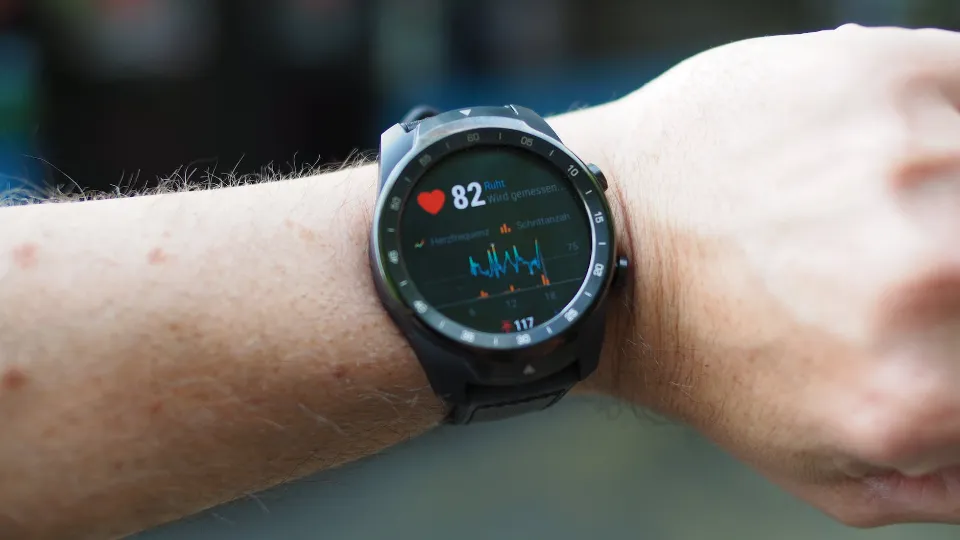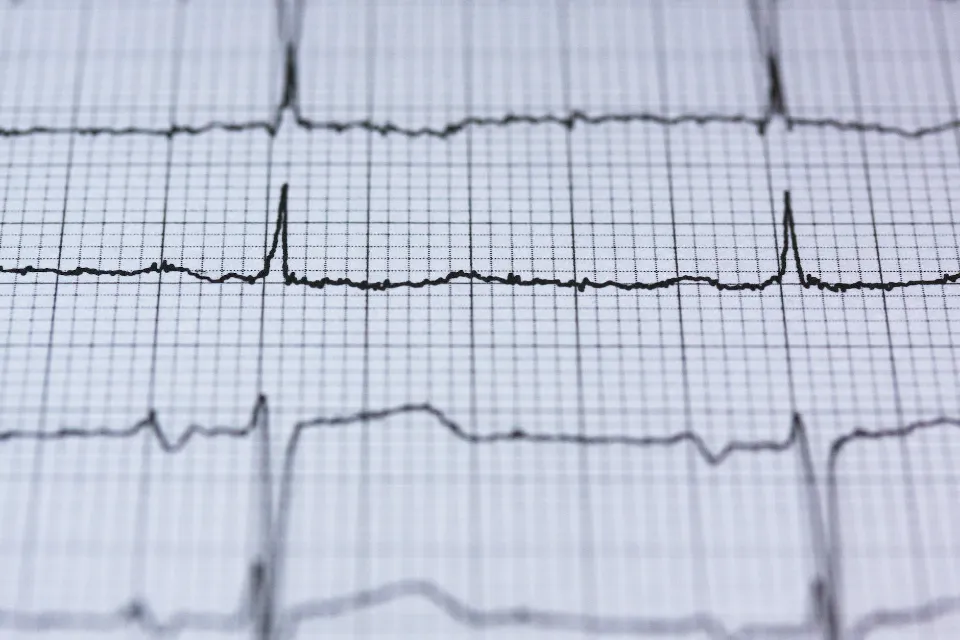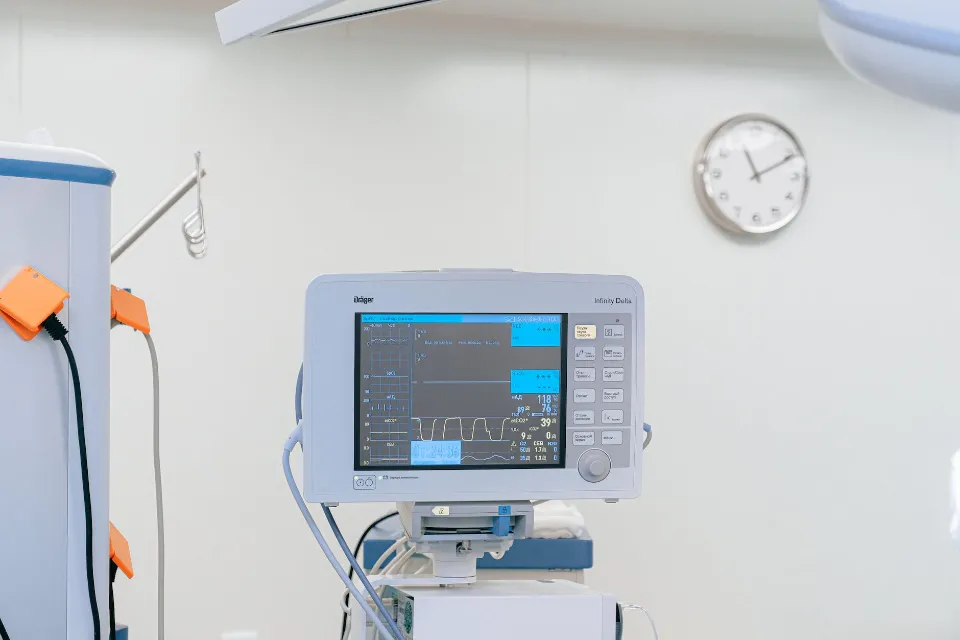When you don’t know exactly what you’re looking at, heart rate monitors can be a little intimidating. Things can become a little perplexing with all the wavy lines and multicolored numbers. You’ve come to the right place if you’re wondering what all those wavy lines, numbers, and acronyms mean!
Continue reading to find out how to interpret the heart rate monitor’s readings and what information each value can provide about the health of a loved one. Ask the doctor or nurse on duty if you have any questions or concerns.
What Are Heart Rate Monitors?
One component of a patient monitoring system is a heart rate monitor.
Each patient monitoring system could be unique, i.e. a pulse oximeter will not have the same construction as a glucose monitor. However, the components of a patient monitoring system are classified into three general categories: the actual patient monitoring device, the capital equipment, and the software.

Patient Monitoring Device
Although, the term “patient monitoring device” refers to the complete monitoring system, but for understanding purposes the piece of equipment that makes contact with the patient can be referred to as the patient monitoring device.
The patient monitoring device generally contains a sensor for capturing important patient information and an interconnect solution that transmits the information to the capital equipment.
One example of a patient monitoring device component is the part of a pulse oximeter that attaches to the patient’s finger and senses and transmits their pulse to the capital equipment.
The Capital Equipment
The patient monitoring device collects important patient data, that data is then sent to the equipment where it is processed, stored, and displayed. Capital equipment is the name for the devices that process, archive, and display this data.
Most capital equipment deployed in patient monitoring apply a complex interconnect system of connectors, PCBs, and wire harnesses as well as some kind of screen/monitor where the data is shared in a useable format. One piece of capital equipment found in a patient monitoring system is a computer screen that displays data from a patient’s ECG P-Wave.
The Software
The patient data must be processed after it has been transmitted from the device to the capital equipment. Data is made usable by software after being collected by hardware. The drivers, applications, and programs that process, store, and visually transform the information are vital parts of any patient monitoring system.
How to Read Heart Rate Monitor Results?
Normal Resting Heart Rate
A normal resting heart rate for adults ranges from 60 to 100 beats per minute.
Generally, a lower heart rate at rest implies more efficient heart function and better cardiovascular fitness. A well-trained athlete, for instance, might have a normal resting heart rate that is closer to 40 beats per minute.
Simply check your pulse to determine your heart rate. Put your third and index fingers on the side of your windpipe on your neck. To check your pulse at your wrist, place two fingers between the bone and the tendon over your radial artery — which is located on the thumb side of your wrist.
Count the number of beats in 15 seconds after you feel your pulse. Multiply this number by four to calculate your beats per minute.
Reading Method
The heart beats per minute at rest normally range from 60 to 100. This figure indicates the rate at which the patient’s heart is beating and is typically located in the top right corner of the monitor screen. The number might go up when the patient sits up, talks, or moves around.
Someone who is injured or ill is likely to have a higher resting pulse rate than normal, but this is usually no cause for alarm. When the number rises too high, the monitor will sound an alarm.
The average resting pulse rate for athletes who engage in vigorous cardiovascular exercise, such as cyclists or long-distance runners, may be 40 beats per minute.

What If Your Resting Heart Rate Isn’t in the Expected Range
When your resting heart rate falls outside of these ranges, either too high or too low, it might be a sign of a problem.
- Tachycardia: This is when your resting heart rate is over 100 bpm, an unusually high rate.
- Bradycardia: This is when your resting heart rate is under 60 bpm, an unusually low rate.
The fact that you might have a resting heart rate under 60 beats per minute is a crucial point to remember if you are a very physically active person. Competitive athletes can have resting heart rates as low as 40 bpm or so. That rate, however, would be dangerously low for the average person.
What Should You Do If the Heart Rate is Abnormal?
Your primary healthcare provider should be consulted if you are worried about your heart rate. They are the best individuals to provide you with information or, if necessary, make a specialist referral.
Signs you should talk to your provider about your heart rate include:
- a resting heart rate that is consistently too fast or too slow.
- an irregular or skippable heartbeat.
- If you feel a vibrating sensation when taking your pulse instead of a single “thump” when taking your pulse. This is called a “thrill,” and it can be a sign of certain heart and circulatory problems.
- If you experience heart palpitations, which are the unpleasant sensation of feeling your own heartbeat even when there is no pulse present.
Additionally, you should schedule an annual physical or checkup with your primary care physician at least once a year. During that visit, taking your heart rate is common practice. It also helps your doctor identify a variety of issues early on, many of which, if identified in time, can be treated.
Other Monitoring Factors
Body Temperature
Adult body temperatures typically range from 97.8 to 99 degrees Fahrenheit (36.6 to 37.2 degrees Celsius). Normally, this is the second number you’ll see on a patient monitor, right next to the pulse rate. Hypothermia is defined as a body temperature below 95 degrees Fahrenheit (35 degrees Celsius) and a fever as a temperature over 99 degrees Fahrenheit (37 degrees Celsius).
If a patient is eating or exercising, it’s typical for their body temperature to increase by about one degree. If they are sleeping, their temperature may also decrease by one or two degrees.
Blood-oxygen Level (SpO2)
Normal oxygen levels are between 95 and 100. You can determine how much oxygen is in the patient’s blood by looking at this number, which is expressed as a percentage. Even slightly below 95 is usually acceptable, but if it falls below 90, the patient may need additional oxygen.
Respiration Rate (RR)
Adults should take 12 to 16 breaths per minute when they are at rest. Simply put, this represents how many breaths the patient takes in a minute. The fact that a patient’s respiration rate usually rises when they are feverish is usually not caused for concern. You should check to make sure the patient isn’t having any breathing problems, though.
Summary
Heart rate measurements are only one component of the monitoring system, and you must consider them in conjunction with other elements to ascertain the patient’s actual condition.



